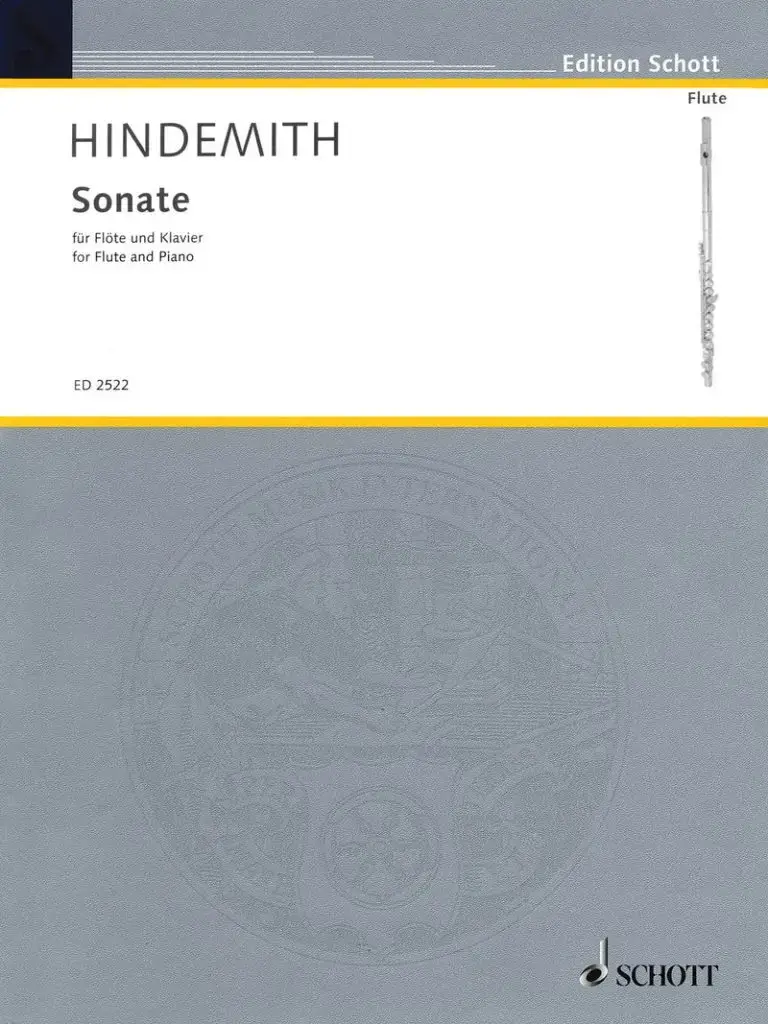
The Premiere of Paul Hindemith’s Sonata for Flute and Piano
Introduction to a 20th-Century Masterpiece
Paul Hindemith’s Sonata for Flute and Piano stands as one of the most important contributions to the flute repertoire from the 20th century. Composed in 1936, during a time of great personal and political turmoil for Hindemith, the sonata reflects the composer’s mature style, which blends traditional forms with modern harmonic and rhythmic innovations. The work was commissioned by the Elizabeth Sprague Coolidge Foundation, a major patron of chamber music, and has since become a staple of the flute repertoire, celebrated for its technical demands and expressive depth.
The First Performance
The sonata was premiered on April 10, 1937, at the Library of Congress in Washington, D.C., as part of the Eighth Festival of Chamber Music, organized by Elizabeth Sprague Coolidge. The flutist for this premiere was Georges Barrère, one of the most renowned flutists of the time, with Jesús María Sanromá on piano. Hindemith himself was in attendance, as this event marked an important moment in his career, especially as he was establishing his presence in the United States after facing increasing hostility from the Nazi regime in Germany.
The premiere was met with critical acclaim, highlighting both the technical challenges and the deep emotional resonance of the work. Barrère’s performance was particularly noted for its clarity and expressiveness, qualities that were essential to bringing Hindemith’s complex musical ideas to life.
Structure and Musical Content
Hindemith’s Sonata for Flute and Piano is structured in four movements:
Heiter bewegt: The opening movement is marked by its lively and buoyant character, featuring a clear melodic line for the flute, supported by a rhythmically intricate piano accompaniment. This movement exemplifies Hindemith’s neoclassical style, with its use of counterpoint and thematic development.
Sehr langsam: The second movement is slow and introspective, offering a lyrical and expressive melody that unfolds in the flute, accompanied by delicate chords in the piano. This movement explores a wide emotional range, from melancholy to quiet reflection, and is notable for its use of dynamics and phrasing.
Sehr lebhaft: The third movement serves as a lively scherzo, characterized by rapid passages and rhythmic vitality. Hindemith’s use of syncopation and unexpected harmonic shifts adds to the movement’s energetic and whimsical nature.
Marsch: The final movement is a march, bringing the sonata to a powerful and resolute conclusion. Hindemith combines a strong rhythmic pulse with bold harmonies, creating a sense of determination and finality.
Importance and Legacy
The Sonata for Flute and Piano is regarded as one of Hindemith’s most significant works for wind instruments and is a cornerstone of the modern flute repertoire. Its premiere marked a significant event in Hindemith’s career, particularly as he was beginning to establish himself in the United States. The sonata’s blend of traditional forms with modernist innovations has made it a favorite among flutists and a subject of study and performance in conservatories around the world.
Georges Barrère’s interpretation at the premiere helped to cement the sonata’s reputation, and the work continues to be performed and recorded frequently. It is celebrated for its balance of technical challenge and expressive content, offering performers the opportunity to explore a wide range of emotions and musical ideas.
Conclusion
The premiere of Paul Hindemith’s Sonata for Flute and Piano in April 1937 was a pivotal moment in the history of 20th-century chamber music. The performance by Georges Barrère and Jesús María Sanromá at the Library of Congress introduced a work that remains a cornerstone of the flute repertoire. Hindemith’s ability to combine traditional forms with modernist techniques has ensured that this sonata continues to be an essential piece for both performers and audiences alike.
Premiere of Paul Hindemith’s Sonata for Flute and Piano

